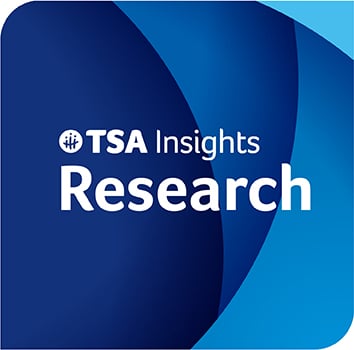Eye-related side effects of vigabatrin in children
About this study
Vigabatrin is a common treatment for infantile spasms, simple or complex partial epilepsy and other seizure disorders occurring in both children and adults. It is widely prescribed for people living with TSC. Concerns about potential eye-related side effects, such as peripheral vision loss and optic nerve damage, were first reported in adults in 1997. For more on this please see https://tsa.org.au/understanding-tsc/signs-symptoms-and-treatments/eyes/ and https://tsa.org.au/understanding-tsc/signs-symptoms-and-treatments/epilepsy/
The US Food and Drug Administration (FDA) recommends monitoring patients receiving vigabatrin for potential retinal toxicity, with recommended eye examinations within 4 weeks of starting the medication and subsequent assessments every 3 months until discontinuation. These recommendations have evolved over time.
This particular research study examined the incidence of vigabatrin-related ocular toxicity in children and the usefulness of regular screening or additional testing.
How the study was conducted
The researchers conducted a retrospective review of the medical records of 284 children with an average age of 2.09 years who were prescribed vigabatrin and had one or more ophthalmic assessments at two medical centres between May 2010 and May 2021.
The assessments included:
- Dilated fundus examination, where a health care professional uses a special instrument with light and magnifying lenses to examine the back of the eye, including the retina and optic nerve.
- Electroretinogram (ERG), a diagnostic test used to measure the electrical responses of the retina to light stimulation. During an ERG, electrodes are placed on the surface of the eye to record the electrical signals generated by the retina in response to flashes of light. This test helps evaluate the functioning of the retinal cells.
- Optical coherence tomography (OCT), a non-invasive imaging technology that produces high-resolution, cross-sectional images of biological tissues, including the retina of the eye. It works by measuring the echoes of light waves to create detailed, real-time images of tissue layers and structures, allowing health care professionals to assess the thickness and health of the retina, optic nerve, and other eye structures.
- Visual field (VF) testing, a diagnostic procedure where a patient responds to small lights or stimuli presented at different points in their field of vision, helping health care professionals assess the full extent of their central and peripheral vision.
The researchers categorized abnormalities as attributable to vigabatrin, possibly attributable to vigabatrin, or not attributable to vigabatrin.
Outcomes of the study
The incidence of vigabatrin-related ocular toxicity was found to be low.
Out of 1,281 assessments conducted:
- The average time between initiating vigabatrin and the first eye assessment was 4.6 months.
- Only 2 children (0.7%) had definite vigabatrin-related ocular toxicity, both identified through ERG testing.
- An additional 4 children (1.4%) had optic atrophy, possibly related to vigabatrin.
- The remaining 278 children did not exhibit abnormal examination or testing findings attributable to vigabatrin.
- Over the 10-year study period, the rate of examinations and ERGs per child decreased.
Limitations of the study
Potential limitations of the study include: loss of patients in the follow up period, variability in assessment practice patterns between institutions/providers, and a relatively small number of ERGs, OCTs, and VF tests being performed.
Implications of the study
This study indicates that the incidence of vigabatrin-related ocular toxicity in children is low in a real-world clinical setting, and the authors state that the value of screening for this condition is unclear.
The study also highlights the challenges in identifying toxicity, especially in children with other ocular and neurological conditions that have an impact on vision-related outcomes. The declining number of ocular examinations and testing suggests a growing recognition of the limited clinical benefit of regular screening for vigabatrin-related ocular toxicity in children. The study emphasises the importance of weighing the potentially significant benefits of seizure control against potential ocular toxicity when considering treatment with vigabatrin in paediatric patients.
Schein, Y., Miller, K. D., Han, Y., Yu, Y., de Alba Campomanes, A. G., Binenbaum, G., & Oatts, J. T. (2022). Ocular examinations, findings, and toxicity in children taking vigabatrin. Journal of AAPOS: The Official Publication of the American Association for Pediatric Ophthalmology and Strabismus, 26(4), 187.e1-187.e6.
Full paper available at: https://doi.org/10.1016/j.jaapos.2022.05.001
DISCLAIMER
This information is intended to provide some insights into recent TSC-related research. It is not intended to, and it should not, constitute medical or other advice. Readers are warned not to take any action without first seeking medical advice.

